Over the past 4 years I have visited the French River several times. Since it is a relatively long river, consisting of numerous bays, legs and peninsulas and dotted with a myriad of rocky islands and rocks, it would take months to explore the whole river and EXPERIENCE its incomparable beauty. Thus, almost each time I canoe on the French, I travel on a different part of the river (please see my other blogs). This time, it was river's Wolseley Bay that I was going to paddle on!
August 21, 2011, Sunday

Our trips to the French River area have almost become a routine: a pleasant drive of 300 km. up north on highway 400, de rigueur stop in the Hungry Bear Restaurant for lunch—and then a quick jaunt to a small town of Noelville, where most of its inhabitants speak French, albeit they have sometimes problems understanding French-speaking people from Quebec. After doing some last-minute shopping in Noelville, we drove to Wolseley Bay Lodge located at the end of road no. 528, loaded the canoe, parked the car at Wolseley Bay Lodge for $6.00 per day fee and began paddling towards south-east.
There were some cottages and lodges, notably Totem Lodge with its colourful totem pole mascot guarding the point along the shores of the bay; the weather was just perfect, a nice sunny day and we leisurely reached North Channel—a popular canoe route for those paddling around Eighteen Mile Island. Most of the land around us belonged to the park, yet there were some swaths of privately-owned land, usually with cottages.
Three campsites were located in that area—one on the shores of very big Eighteen Mile Island (no. 323), one on a small island nearby (no. 322), which actually looked quite nice—and another on the northern tip of an island (no. 321)--which we immediately liked and decided to stay on! The island had a boomerang-like shape, was rocky and heavily forested. The campsite was located on a more-less flat rock, there was another massive rock that at one point formed a level, stage-like field (perfect for impromptu performances!) and the fire pit was close to the rock's vertical wall.
In addition, there was a washroom (the thunder box, as it is called) and park bench. We did not see any other campsites from our site; there were plenty of wood some 200-300 meters in the forest. When we set up the tent, two canoeists paddled by and apparently were planning to stay on this site—well, too late!--but fortunately, there were plenty of other campsites available. While the sun was still up, I cleaned a pike I had caught while paddling on Wolseley Bay and later grilled in over the campfire.
August 22, 2011, Monday
We were up at 11 am. Usually I keep my radio in the tent and try to listen to the news before leaving the tent. When I turned on the radio, I was shocked to learn that Jack Layton, the head of the New Democratic Party, who just in the May, 2011 federal elections in Canada had lead the party to an unprecedented victory and become the Leader of the Opposition, died this morning at 5:00 o'clock. Not long ago he successfully beat prostate cancer; later, he underwent a hip surgery and while campaigning, he was still using his cane—which, by the way, later became one of the symbols of his election triumph, as he was waving it on the election night. Less than one month ago Jack Layton had appeared on TV, quite haggard, and speaking with visible difficulty, he announced he had just been diagnosed with a different kind of cancer and thus was temporary stepping down as the party's leader. He was only 61 years old. Although I had never been a supporter of this left-wing party (NDP) and its socialist ideology, I was, as most of Canadians, quite affected by his rapid and untimely demise. Another news item was about Libya, where the fighters overtook the capital of Tripoli and were looking for Qaddafi.
It was windy, cloudy and only +21 C. We went into the forest to get some wood. It was a very nice area, rocky, with plenty of felled trees, apparently by storms. In the evening we paddled to the Little Pine Rapids, located between Eighteen Mile Island and Commanda Island; the picturesque rapids formed a mouth of another of the French River's channels, the Main Channel, circling Eighteen Mile Island from the south and eventually merging with the North Channel.
Vis-à-vis the rapids was the Lochaven Wilderness Lodge. Live guitar music wafted out from the deck where diners enjoyed their American Plan "all you can eat "fish fry. We pulled up to their dock where . Catherine made a phone call on a good old Bell land-line (the cell coverage was extremely spotty and unreliable) and we talked to a nice young fellow, whose family had apparently owned the lodge for many years.
We departed towards our campsite when it was already dark, but had no problems finding the way; besides, we had left a flashing light attached to a tree which helped us locate our campsite. Soon it started raining; using a tarp, tree sticks and rocks, Catherine built a VERY decent shelter—which we did not have to use that night as it stopped raining. Despite my efforts, I did not catch any fish, so we enjoyed grilled chicken.
August 23, 2011, Tuesday
Sunny, but windy—our plans to paddle to the Chaudiere Dam (and the other end of the Chaudiere Portage—yes, the same portage which we had paddled to during our French River “Dokis” trip in July, 2011—see blog http://ontario-nature.blogspot.com/2011/07/french-river-dokis.html ) were dashed.
In the evening we paddled east, with the wind, reaching campsite no. 316 on an island, but it was too windy to paddled further and we paddled back to the campsite, this time against the wind: it turned out to be a rather difficult task, at some points we hardly moved—it was so disappointing. Once we reached the campsite, we had a nice fire—and Catherine's shelter came really handy: not only did it protect us from the storm and rain, but it also covered the fire pit, thus allowing us to enjoy the campfire!
August 24, 2011, Wednesday
The weather forecast was really bad and indeed, it was windy, chilly, wavy and raining; on top of that, we had a storm with thunder and lighting. In spite of this weather, a number of people paddled in their canoes by our campsite and eventually camped in the area of campsites nos. 313 and 314. Then Environment Canada weather forecast issued a number of weather warnings, even calling for tornadoes and white squalls. Needless to say, we stayed put, under the tarp. Catherine did develop a touch of campground fever in late afternoon and talked me into a paddle, but as soon as we got ready to push off, a dark cloud and rain appeared and we easily changed our minds
August 25, 2011, Thursday
It was our last day on the French River, so we packed and paddled to the Wolseley Lodge where the car was. It was disappointing as we had not done 3/4 of what we'd planned but hey... there is always next year! We had lunch on the terrace of the lodge. The view was awesome! And the food was good too. According to photos at the restaurant, a lot of people had caught huge muskies and pikes (and I mean HUGE!), but from my own experiences and a number of conversations with experienced fishermen over the past years, I am sure that it is becoming more and more difficult to catch fish—after all, I was trolling for hours and then casting and most of the time did not even catch ONE decent fish for dinner—and many others, who had from 10 to 20 fishing rods, expensive fish finders, motor boats and plenty of experience, either did not catch anything or just one or two fish. Well, I am not after that big pike or Muskie—I just want to catch one or two fish that I can later grill over the campfire!
After lunch we stopped in Noelville, went to the LCBO store and the supermarket to replenish our food supplies, as well as visited a small dollar store next to the Beer Store where I bought a pair of nice clogs. We asked the saleslady where we could get water—she incredulously advised us to drive to her house and get water from her garden hose as her well was very deep and had much better water than in other places. Believe it or not, we had some problems finding her house and asked local people—they were very friendly and in no time literally led us to her residence—as well as told us a few things about the town.
Having left Noelville, we drove to Killarney Park (St. George Office), picked up our permits (but wished they were available to print off online), bought a map and drove on Bell Lake Road (9 km) and reached Bell Lake, where we unloaded and parked the car. Unfortunately, it was impossible to drive to the lake—there was a 100 m. 'portage' from the parking lot to Bell Lake (it was not indicated on the map), so we drove to the private area of Blue Mountain Lodge and departed from there, thus avoiding that annoying portage. We had some explaining to do to the 20 year old park guy' who immediately showed up in a motor boat to tell us it was verboten to use the launch site and checking to see if we were on his permit list. There was a number of campsites on the lake, all on the 'first come first serve basis'.
It was getting a little late and we did not have much time to look for a campsite, yet as we kept paddling north on the lake, we saw campsites on its west and east shores—all were occupied!
Finally we reached a small bay—one campsite on its outer shores (no. 86) was quite nice, but it was occupied; another one inside the bay (no. 87) was vacant, yet it was somehow dark because it faced the east and then we proceeded to another campsite no. 88—it was located on a rocky hill, near a very small bay with a narrow, sandy beach.
We knew that it would require dragging our stuff up the steep rocky wall... but otherwise it was excellent and we decided to camp there. The adjacent campsite (no. 89) was on an island; it was also quite nice, but was occupied by a family with children. I brought the tent up the hill and was setting it up as Catherine carried all the rest of the equipment up the hill (she is in great shape!) and later pulled the canoe on the sandy beach in the small bay and flipped it. Soon we were sitting on the top of the rock, just meters from the tent, facing the west and admiring beautiful sunset! Once it became dark, we saw several campfires along the shores of Bell Lake; in fact, during the day we saw the put-in point (where the car was parked), located over 2 km from our campsite. The campsite had a thunder box (i.e., washroom) and there was plenty of wood in the forest, so we enjoyed a wonderful campfire!
August 26, 2011, Friday
We were up at 10:00 am. The weather was nice, but a little windy. We swam, read a little, relaxed and about 4:00 pm went paddling, but due to the wind we only paddled to campsite number 86—the previous campers had left and it was now vacant. It was a very nice campsite, with a great view and plenty of wood everywhere. The family on the island (no. 89) left too, but another family with one kid arrived and now was camping there. We paddled around 'our' bay, picked up some wood along the shores (in fact, the park encourages campers to pick up wood while canoeing and not around the campsite—in addition, we brought one bag of wood, just in case). We paddled inside a very small bay near campsite no. 87 (which was occupied—it was the campsite that we had considered taking yesterday, but found it to be too dark), Catherine got out of the canoe and brought plenty of wood.
We were back at our campsite before 6:00 pm, unloaded the wood and later sat on the rock, enjoying a glass of red wine and watching the sunset. The 08:00 o'clock news was about the life of Jack Layton and the events in Libya. Once it got dark, we started the fire and with my headlight on, for the next few hours I was absorbed in reading “The Economist”--an absolutely first-class magazine! Nevertheless, I had never agreet with this magazine's left-wing approach. Sometimes I was shocked at the idiotic statements made there. Well, it only proves that intelligence and stupidity can coexist!
August 27, 2011, Saturday
The weather was nice, so we were up in the morning and paddled to Balsam Lake—where we had paddled for the first time in August, 2008. There was a beaver dam between Bell and Balsam Lakes, so a portage was required. For many years there had been the 'famous' Bell Lake Tramway—run by Blue Mountain Lodge—consisting of a cart with wheels moving along built-in tracks.
It was possible to place even a motorboat on the cart—we successfully used the cart in 2008. Unfortunately, for some time the cart has been gone as the lodge no longer wanted to maintain it. Yet Catherine happily carried the canoe and I carried the rest of our equipment and after several minutes we were paddling on Balsam Lake.

Most campsites on Balsam Lake were occupied—no wonder, it was a very nice lake, had plenty of beaver lodges, swamps, lily pads, lily flowers and fascinating stumps sticking out of the water. It was a very pleasant paddle, but after reaching campsites #117 and #118, we had to turn back.
While paddling near campsite no. 116, we saw a small black bear on the shore, but it was quite timid and did not want to pose for photos. At the Bell Lake portage we encountered a group of girls, part of the Tim Horton Children's Foundation which organizes camps for kids. They helped us out, without even us asking them, carrying the canoe and some of our equipment—thanks! Catherine was surprised they could travel so lightly; turns out they used dehydrated food. We showed them which few campsites on balsam lake were available. Arriving at our campsite just before the sunset, we could again observe this interesting phenomenon which so many people take for granted and never even think of.
We also spoke to the family camping on the adjacent island (no. 89), they also had gone hiking to the Crack and saw a bear. Then I started the fire, read another engrossing issue of “The Economist” and listened to the news—in the morning some of the radio and TV stations broadcast live Jack Layton's funeral and we could listen to some of its highlights. We went to bed at 1:00 am.
August 28, 2011, Sunday
We were up at 11:00 am and paddled to the put-in point, i.e., the Bell Lake parking. Near campsite no. 86 we saw a family (2 canoes and 1 kayak) asking us if campsite no. 88 (i.e., ours) was empty. We told them this one and the other one on the islands were not available, but pointed to campsite no. 86, just 100 m. from where they were (which they had just passed by), that was very nice and empty—they apparently had no map and had not noticed that campsite's tiny sign. We kept on paddling; it was becoming quite windy and as we approached the put in area, the waves made it quite difficult to paddle—and we were paddling WITH the wind, reaching speeds of up to 9 km/h. In fact, some people, who were about to start their trip, were standing on the shore, unsure whether or not they should go on water. We (that is, Catherine, who by now had mastered the art of portaging and did not want to pass any opportunity to practice it) carried the canoe to the parking lot and put it on the car.
We then drove to the town of Killarney where we went to the Herbert Fish and Chips Restaurant, bought excellent French Fries, then got beer at the LCBO store and drove to a small park in Killarney (Nancy Pitfield Memorial Park) where we unloaded the car, dragged the canoe and our stuff to the shore, chatted with a kayaking club from Sudbury who warned us it was rough seas ahead, parked the car and started paddling in the Killarney Channel.
This channel formed between the town of Killarney and George Island, which for centuries has offered a safe passage and excellent docking place (for more information of this area, please see my blog: http://ontario-nature.blogspot.com/2010/08/canoeing-around-philip-edward-island.html ). It was windy, but the channel was quite calm and sheltered us from the wind. We paddled towards south-east and soon left the channel, paddling on more-less open waters of Georgian Bay, towards the lighthouse. The waves suddenly became quite high and we had to paddle very carefully to keep the canoe in the right position. A big yacht entered the channel and its wake almost overturned our canoe. Far away we saw a number of somehow familiar looking islands—of course, they were the Fox Islands which we had visited just a month ago; especially the round and hilly Centre Fox Island was clearly visible.
Some canoeists do paddle to the Fox Islands from Killarney, but it requires a lot of paddling on open waters. We reached the unmanned lighthouse, located on amazing pinkish rock formation (we had visited the lighthouse and explored the rock with the MeetUp group “TOADS”, later known as “GET OUT”, in August, 2008) and then paddled back into the channel.
Plenty of motorboats, yachts and sailboats were moored along its shores. We saw a “Lady of Lourdes” cave on St. George Island, with the Lady's figure. We paddled to the other end of the channel and once we left it, we immediately experienced very high and rough waves, propelled by the strong wind.
Again, we had to be very careful to keep the canoe from capsizing, keeping it perpendicular to the waves. We saw the white La Cloche Mountains in front of us. Soon, we turned back as it was becoming a little too risky (even though we were less than 50 meters from the much calmer mouth of the channel). Catherine visited the Sportsman Inn, I observed impressive yachts moored in front of the Inn (I was wondering, how much do they cost? how much gas do they use? how far do they go? and I was sooooo glad I did not own such a boat!).
We got back to the Nancy Pitfield Memorial Park where the car was parked and put the canoe on the roof of the car. I read a very interesting inscription on a plaque attached to a boulder in the park:
Nancy Solomon Pitfield, October 21, 1885—August 11, 1965. For nearly half a century, "Aunt" Nancy Pitfield was Killarney's angel of mercy. Born in this community, she studied nursing in Winnipeg and Montreal, where she graduated from Hotel Dieu Hospital. She returned to this then isolated village and married George Pitfield in 1919. She dealt with grave illnesses and accidents without the aid of a doctor, sometimes reaching outlying patients by dogsled or snowshoes. She expertly set dislocated hips and knees, delivered 512 babies, and once performed an emergency appendectomy, always with an encouraging word and a smile. Remembered always for her dedication and love for people.
Indeed, I can only imagine how difficult life must have been in the past, when there was no road and the town was accessible only by air or water. I found more information on that special individual on this site: http://www.killarneyhistory.com .
I find it really fascinating, as it also shows Killarney's history:
Aunt Nancy", as she was known to all of the younger folks, was born here on October 21st, 1887, one of ten children of William and Catherine Solomon. After training as a nurse, Aunt Nancy returned to Killarney shortly after the death of her father in 1913. With no road access to the village, she became our lifeline, serving as nurse, dentist, doctor, surgeon, midwife, and undertaker. She travelled on foot, by boat, horse and sleigh, dog team, and on snowshoes to provide medical care to anyone needing help.
In March 1915, she attended at the birth of three infants in one day --delivering Basil Roque in the morning and the Jackman twins, Catherine and Mary, that afternoon.
One winter a logger from the nearby mills at Collins Inlet had his hand blown off by an accidental dynamite blast. He was brought to Aunt Nancy, who trimmed away the shredded flesh, cleaned the wound, and sewed up the stump of his arm.
In an interview with Bruce West, of the Hamilton Spectator, Aunt Nancy remembered the time she was called to attend a Native woman in labour at Beaverstone Bay. She and Father Paquin, the Jesuit missionary serving Killarney, travelled there by dog team. They broke through the ice near the woman's cabin, and were pulled from the water by a man who had been watching for their arrival.
After entering the cabin, she made Father Paquin strip off his clothes and get into bed. She explained to the family, who didn't speak English, that Father Paquin needed dry clothes. A girl named Big Agnes finally gave him a set of her bloomers. "We put these on poor Father Paquin," said Aunt Nancy, "they were as big as a tent, but Father Paquin didn't get pneumonia and the baby arrived just fine".
After years of dealing with a wide range of human experiences, she was well prepared to deal effectively with situations even she could not have anticipated.
In the late 1930s, Aunt Nancy had prepared for burial the body of an elderly man living on George Island, across the Killarney channel. A wake was always held in the home of a family member (as it often is today), for three days and nights of ritual prayer. Several people remained with the deceased throughout each night.
This time, on the last night of the wake, the family went to bed and Aunt Nancy went home, leaving a small group of teenagers to stay the night. The young folks, craving that era's version of junk food, decided to make pull taffy.
Warm taffy is elastic and very sticky -- pulling it apart as it cools makes it firmer; easier to eat. One teenager was too close to the casket during the process, and a large glob of taffy dropped down onto the old man, becoming entangled in the great thick beard he had worn most of his life. The teenagers tried to pull it off, scrape it off, and wash it off, but it wouldn't budge. Finally, in panic and desperation, they shaved it off. But they didn't remove just the taffy-filled section of the beard. They shaved the deceased clean.
Hoping no one would notice anything wrong, the teenagers said nothing when Aunt Nancy returned early in the morning. Following tradition, she immediately knelt at the casket to pray, and of course saw that the beard was gone.
Fortunately, the family was still in bed. After listening to the group's explanation, Aunt Nancy sent them home, with strict instructions to say nothing about the incident.
It is not known exactly what Aunt Nancy told the family—one of the teenagers thought she closed the casket, and told the family that the body had deteriorated too much to leave it open. In any case, the feelings of the family were spared and the old gentleman was buried with dignity.
For decades, Aunt Nancy faced dangerous waters, storms, and perilous ice conditions to give us the gift of good health. Until 1951, when electricity came to the village, she travelled to night calls with only the soft glow of coal-oil lamps to light her way and illuminate her work.
In 1965, three years after Killarney became accessible by road, Aunt Nancy died at the age of 80. She had served her people for over fifty years, sharing with us her expertise, her good humour, and her compassion. We have nothing to give her in return but our gratitude and the promise that she will never be forgotten.
We also went to Pitfield's and bought sausages, got a block of ice and excellent smoked fish from Herbert's Fisheries and drove to Killarney Park where we had a quick shower. We left the park at 6:20 pm and drove back to the Bell Lake parking lot. As we were driving on Bell Lake road, we saw a black bear just standing in the middle of the road and looking at us; I wanted to take a better photo of the bear and slowly drove towards it, but then it started running and for a while it looked liked I was chasing the bear with the car, but soon it ran off the road and disappeared in the forest.
At 07:05 pm we were on the water, paddling very hard (up to 8 km/h) and reached the campsite at 07:28 pm, unloaded the canoe, got the cold beer, went up on the rock and drinking beer, observed the sunset. The other campsites (nos. 86 and 87) were also occupied. We talked to two fishermen who were fishing close by; they said they always stayed on our campsite when it was available. They also caught some bass and said fishing was good in this lake. We had a nice fire and had the sausages.
August 29, 2011, Monday
Last day of our trip... we dragged our stuff down the hill—we wished we could have just thrown it into the water—and paddled towards the parking lot. On our way back we paddled around the Blue Mountain Lodge which had some nice cottages. This time we did not use the Lodge's parking lot, so Catherine carried the canoe as no one offered to help and then we carried the rest of our stuff which required several trips—even such an easy and short portage was quite arduous as we had to carry many pieces of our belongings step-by-step.
We drove to the Hungry Bear Restaurant for dinner, then shopped in the adjacent Trading Post (some of the products were really original) and drove to Toronto. Just past Port Severn we stopped to get gas in Waubaushene and also went to an avant-garde store selling a variety of funny items and candies. Arrived in Toronto before midnight. It was another great, safe and pleasant trip, although the windy weather prevented us from paddling on some days
Blog in Polish/blog po polsku: http://ontario-nature-polish.blogspot.com/2011/08/wosley-bay-and-killarney.html

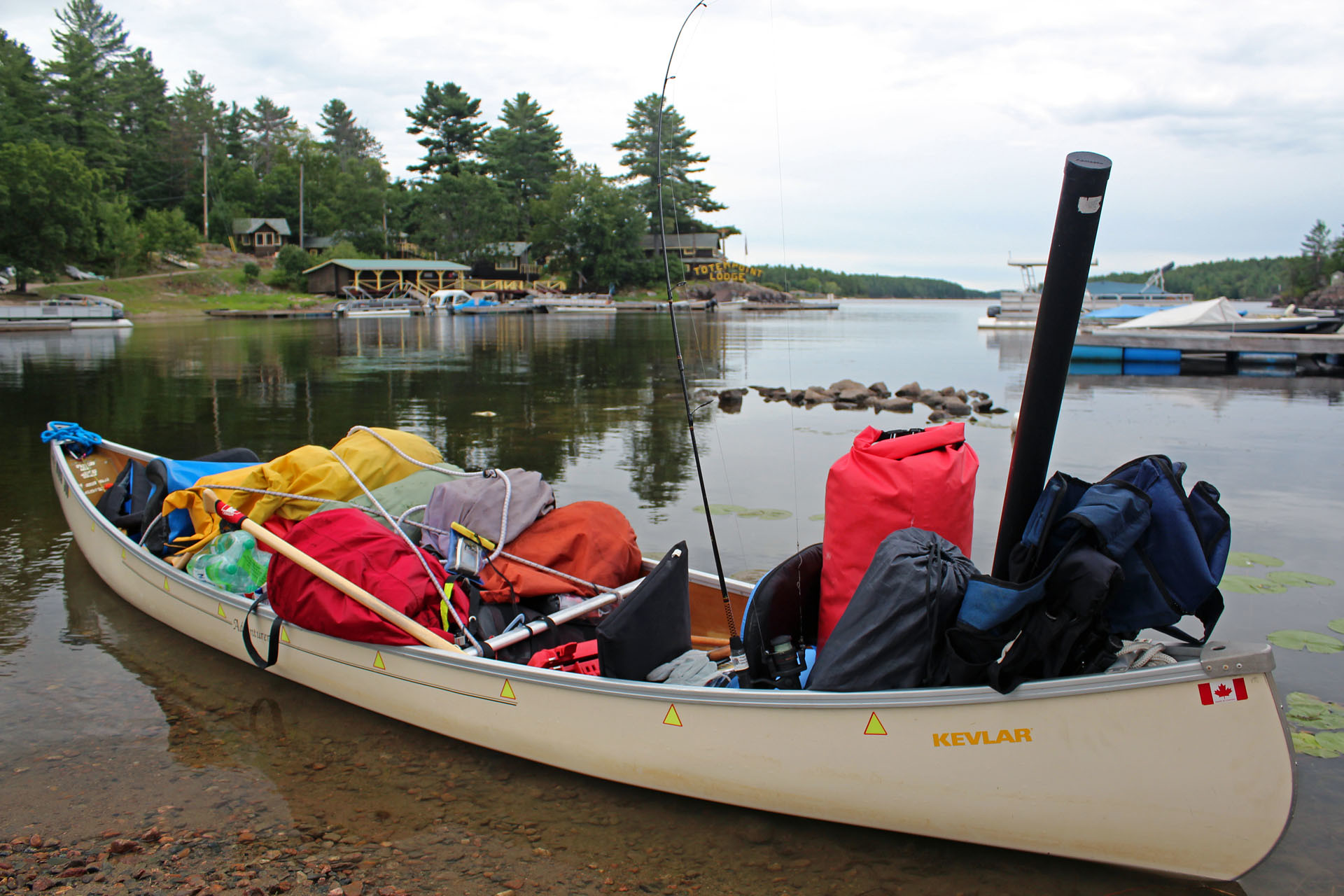






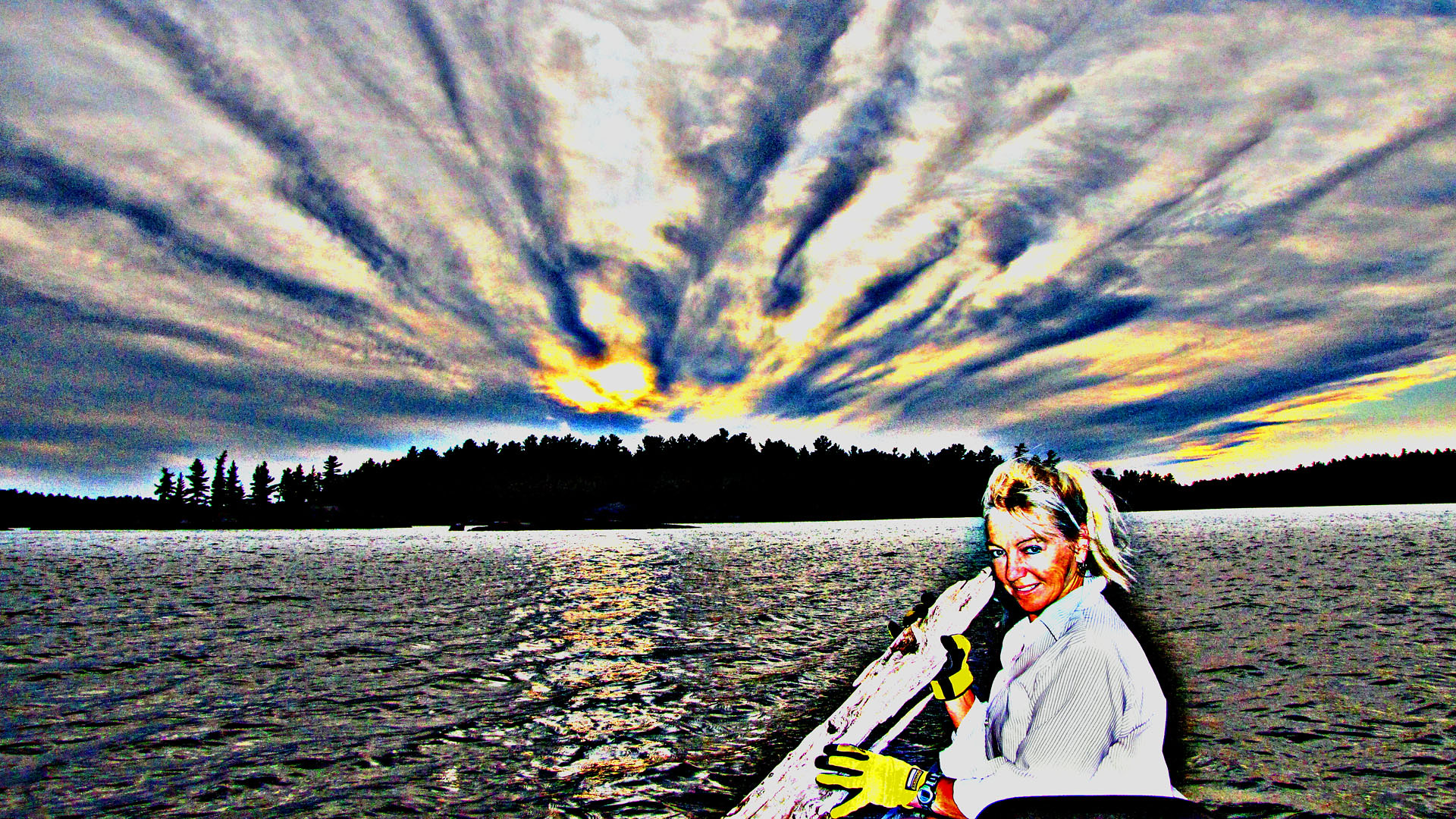



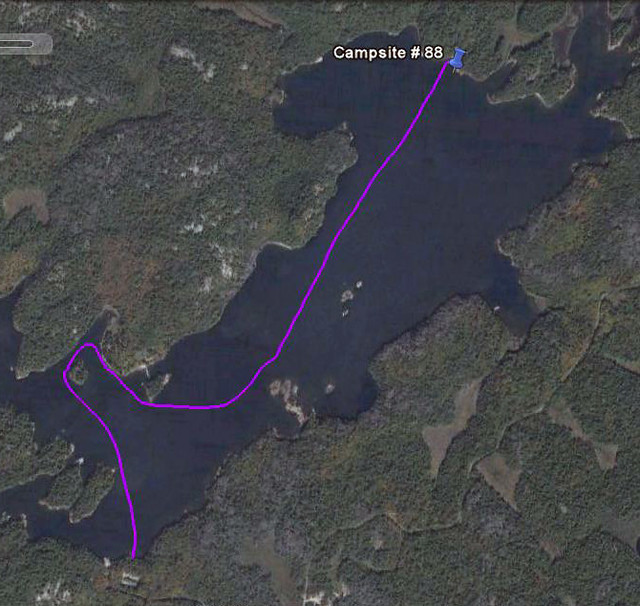







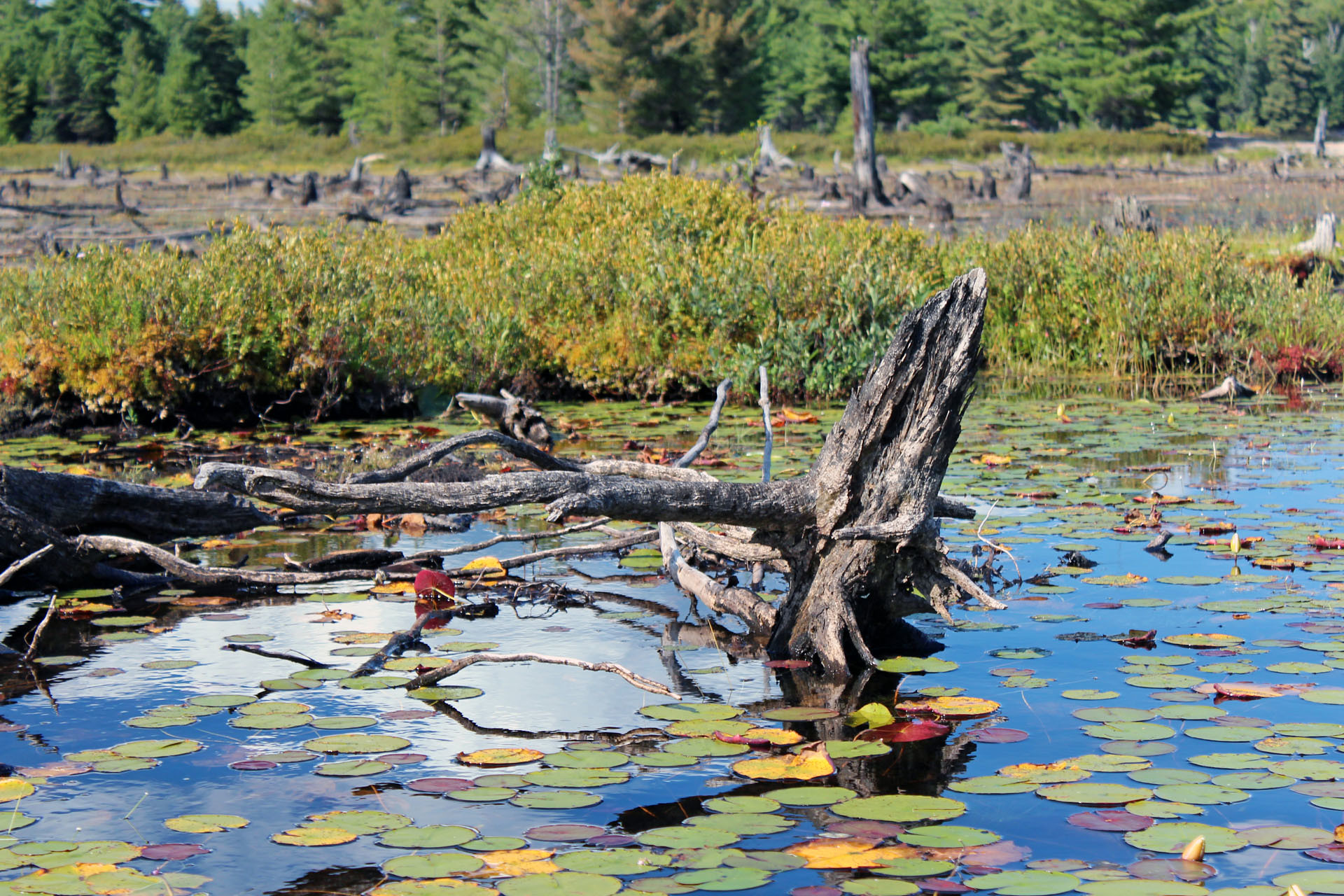






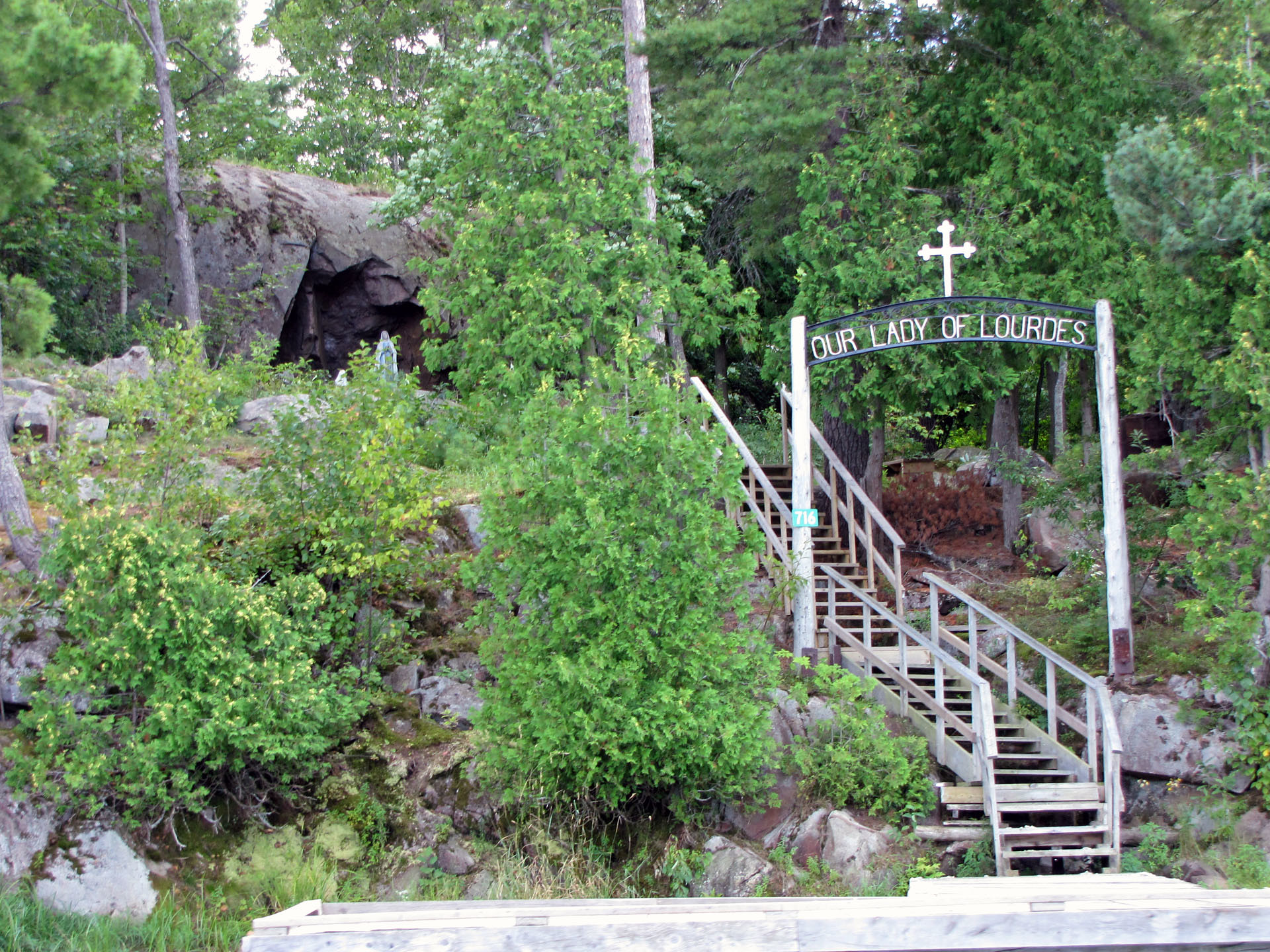


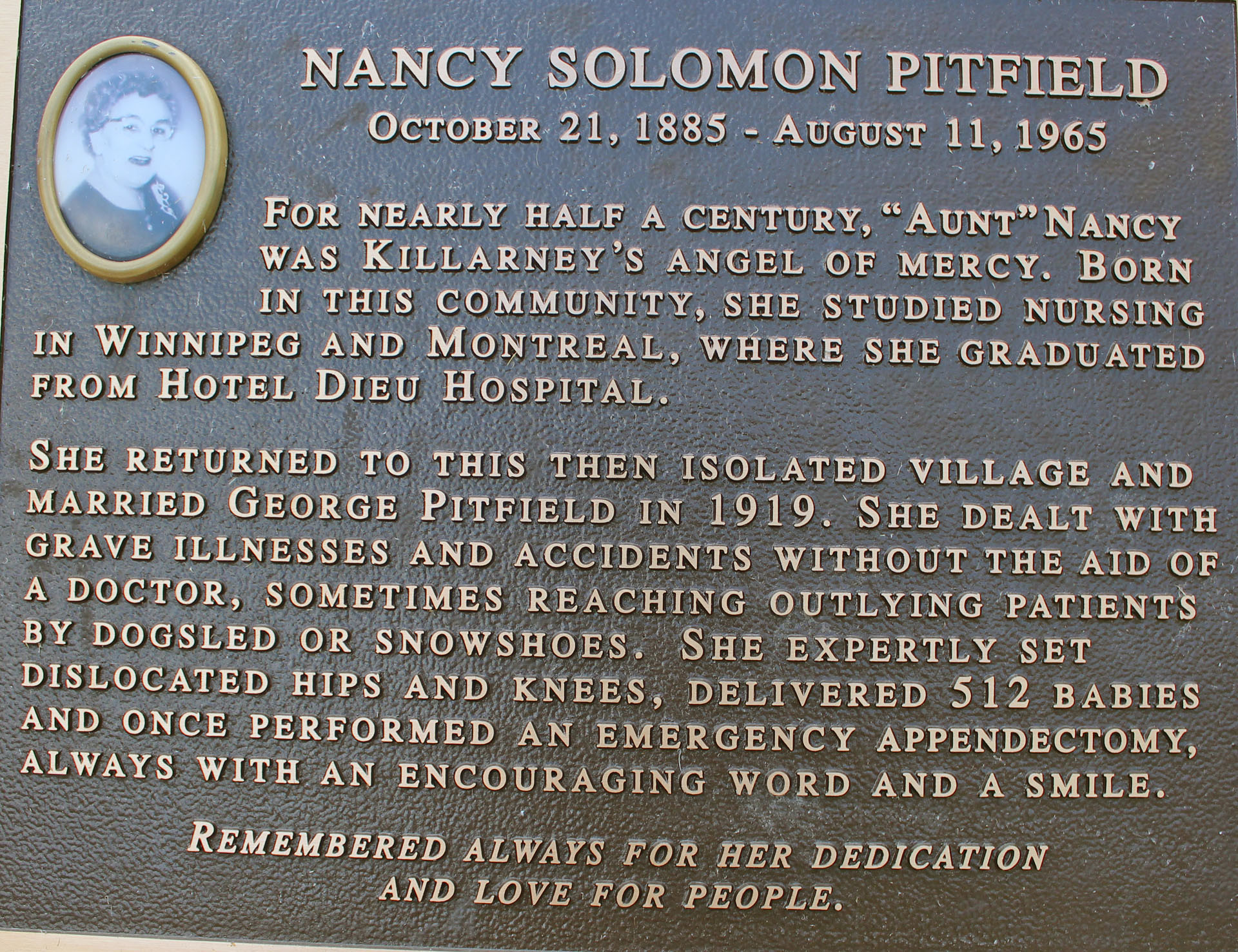




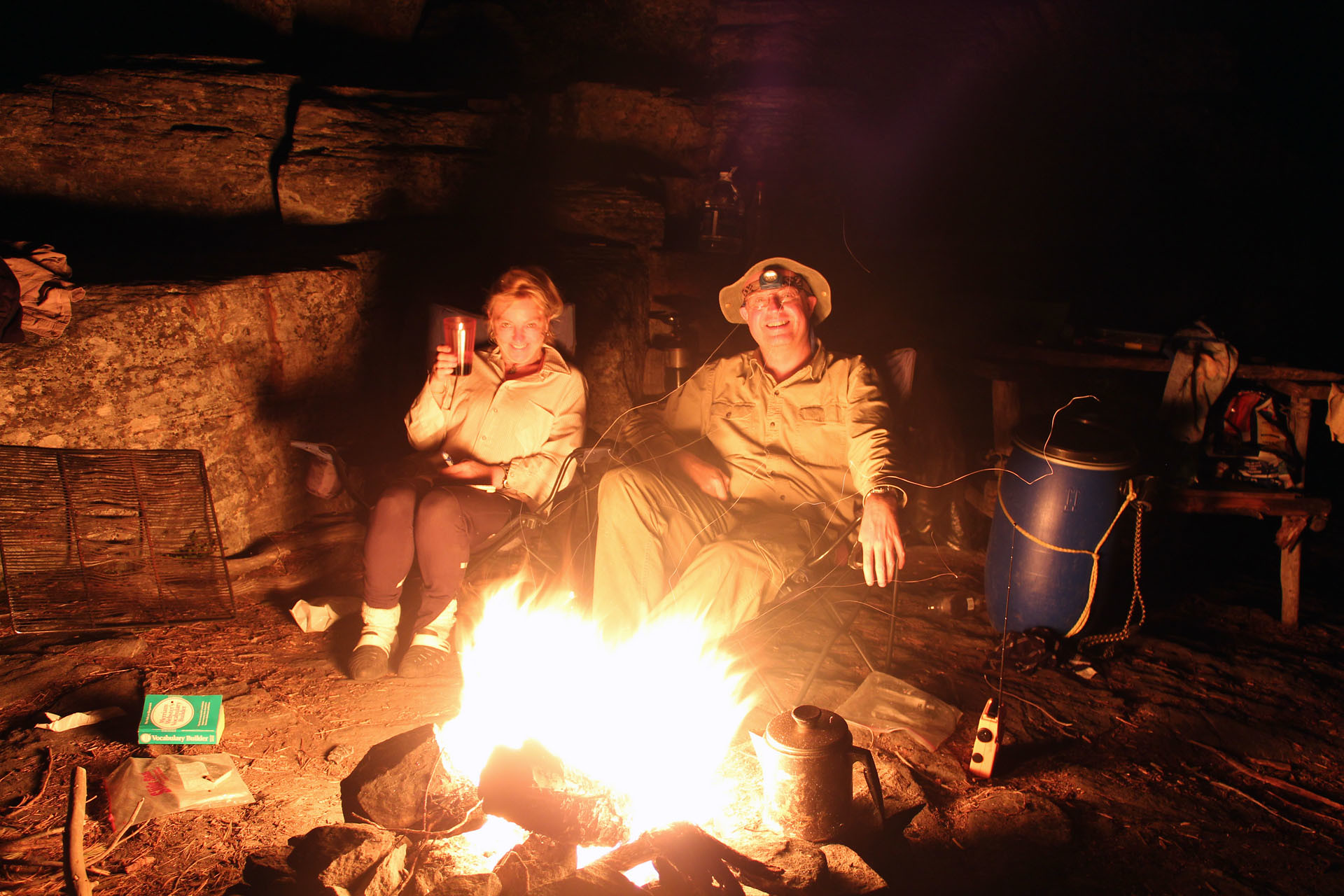
wow you had a great trip im just starting to look at going on a canoe trip next yuear 2013 on the french river thanks so much for the info
ReplyDeleteAmazing article and so informative I picked up a canoe last month from SwopN and promised the kids I would take them to a remote place uo north and you have added to my inspirations to travel...Thanks
ReplyDeleteSounds like you had a great trip. I own some property at the west end of lake Mercer and always wanted to do canoe trip to the other end then into the channel. How is the fishing around the dame and the Grassy Bay area?
ReplyDeleteHave you ever started your trip from Lake Mercer and paddled to Wolsley Bay? We have a rentle apartment above our garage and were thinking about starting canoe trips from our place to Wolsley Bay. And we could pick people up there and bring them back. Just a thought.
Hi Jay! I don't think we ever started our trip from Lake Mercer. It was an amazinig area and we enjoyed our campsite on the boomerang-shaped island.
ReplyDeleteI just returned from another trip to this area and stayed on campsite #321, which is awesome!
ReplyDeleteGreat!!
ReplyDeleteSome friends and I are planning a trip on the French River this July... seems like you have some awesome experience in the park. We're all somewhat experienced and a very active bunch. Can you recommend a good route for a 3-night trip?
Of course I can recommend a good route, just send me an email so we can talk over the phone.
ReplyDelete